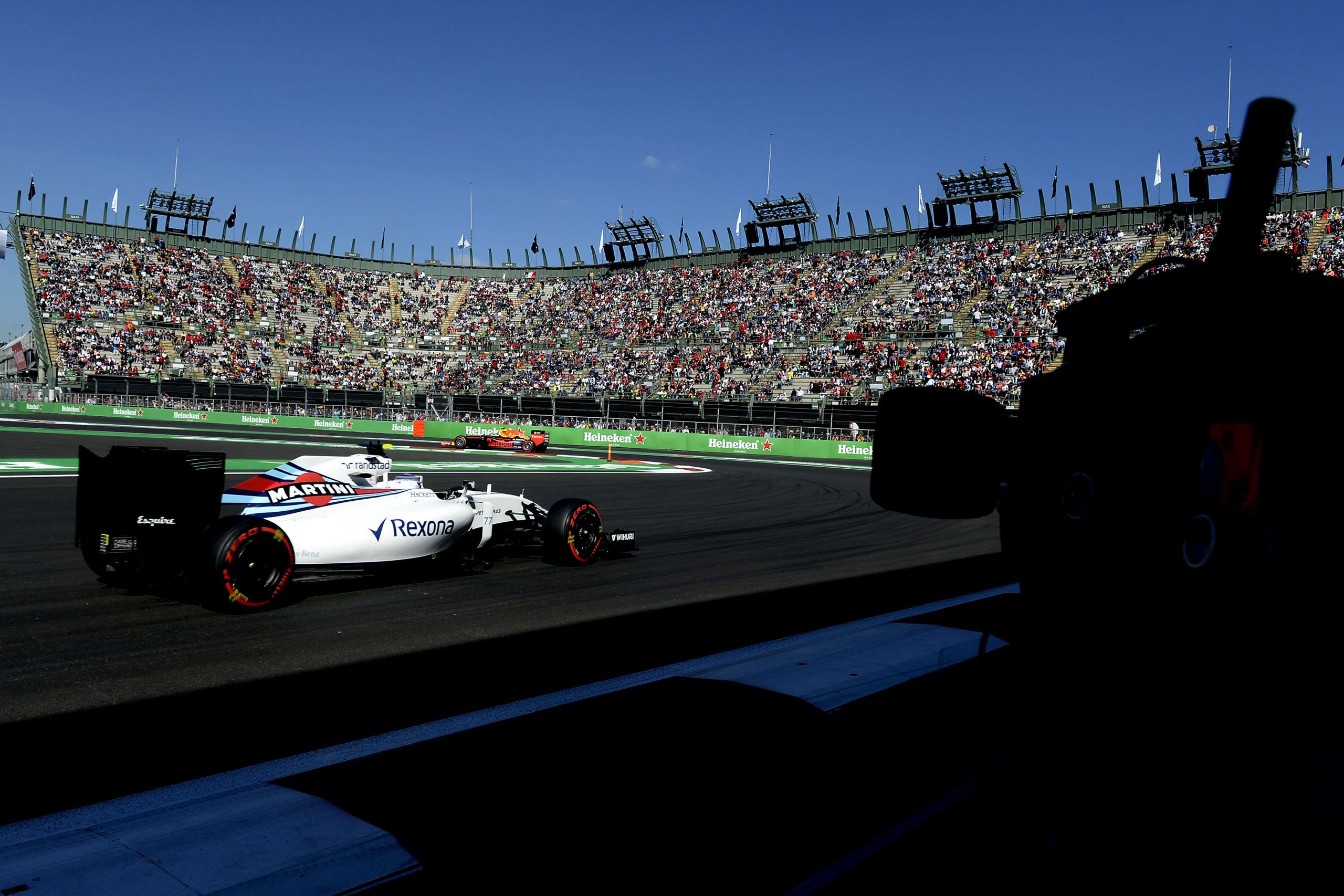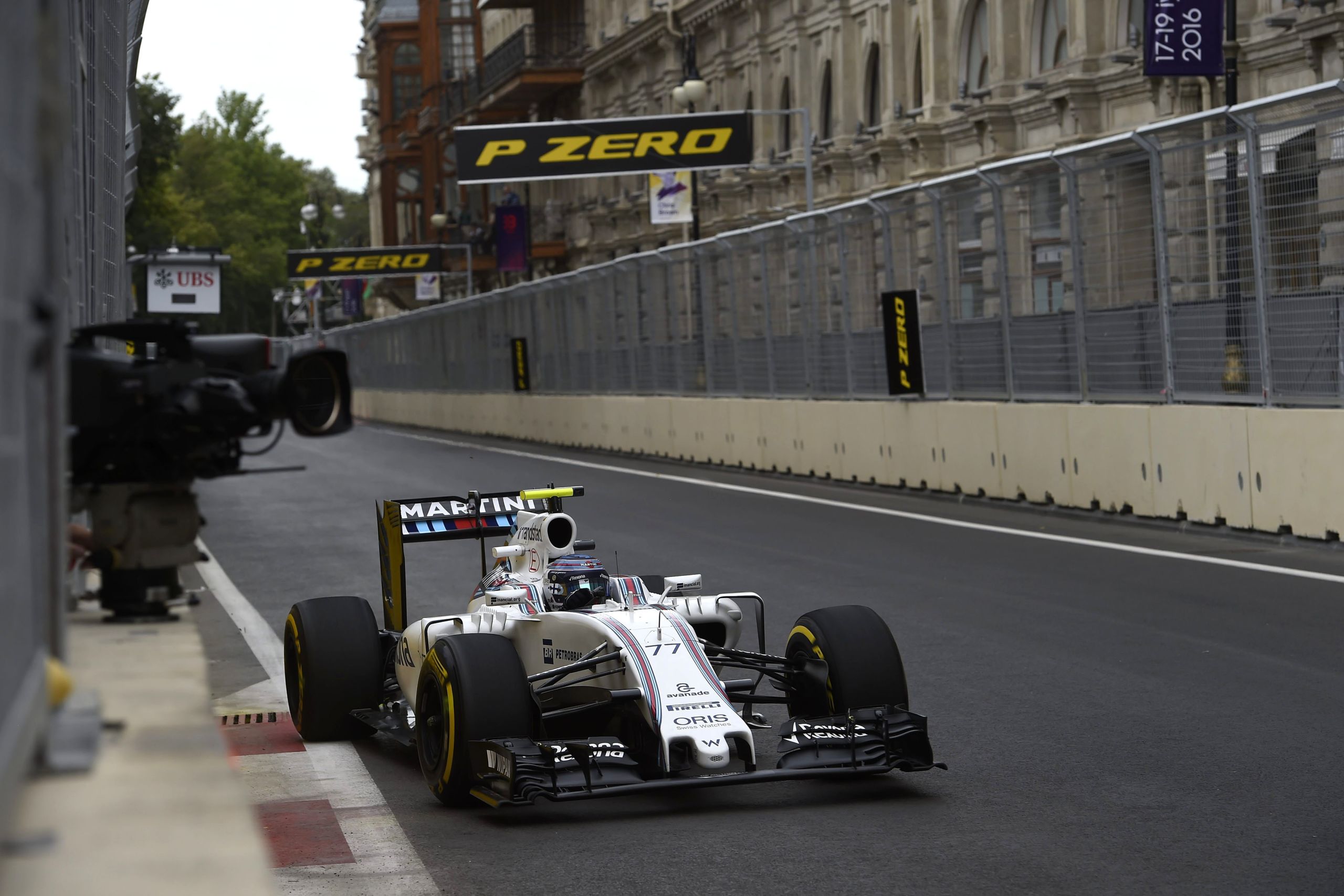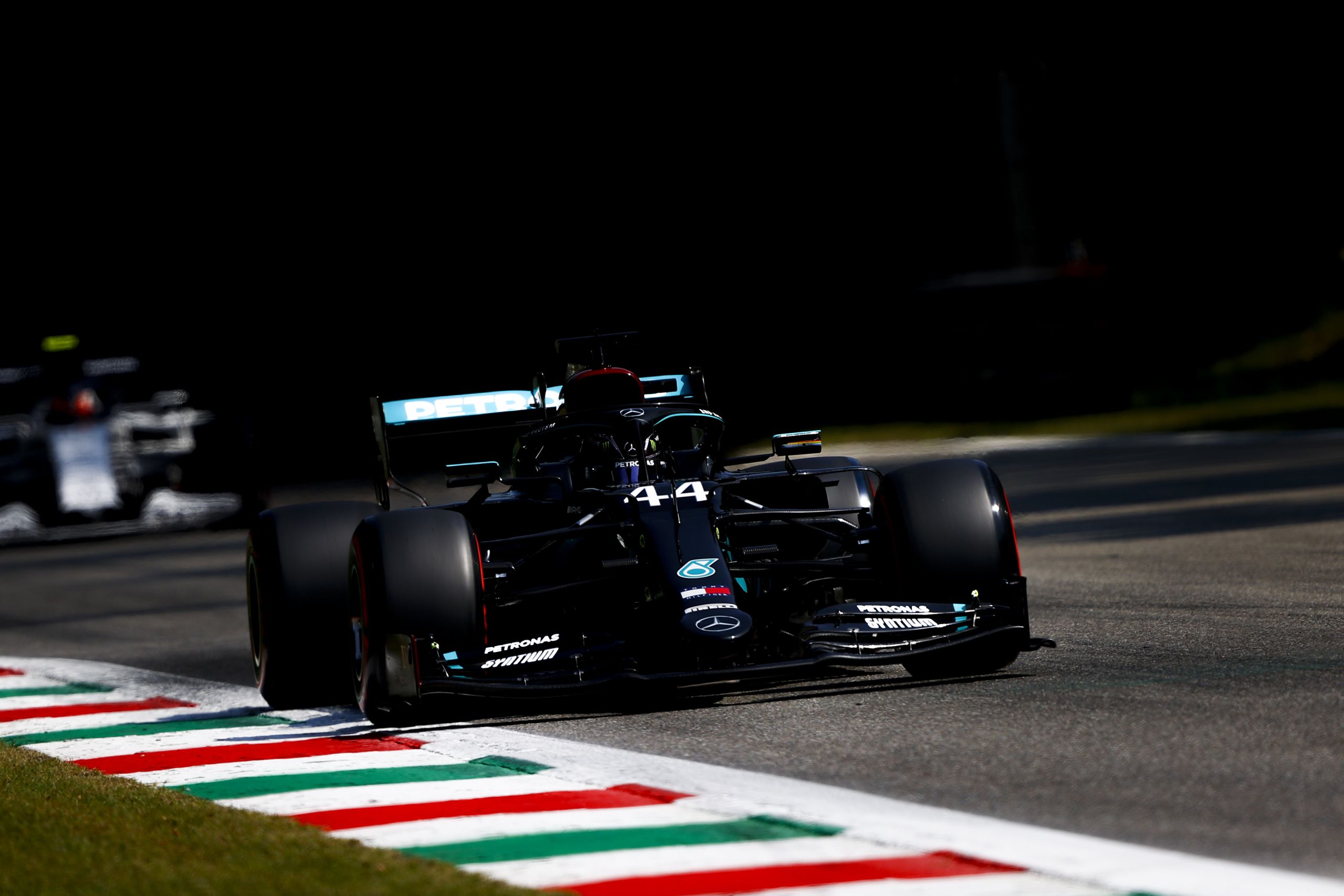Fastest Speed Ever Recorded In An F1 Car
In the high-speed world of Formula 1, records are constantly being pushed to new limits. During the 2016 Mexican Grand Prix, Valtteri Bottas set a remarkable top speed record in a race of 372.5 km/h (231.4 mph) in his Mercedes. In that same season, during the third practice session for the 2016 European Grand Prix, Bottas set the top speed recorded at an F1 race weekend of 378 km/h (234.878 mph).
Four years later Lewis Hamilton set the record for the fastest average lap ever during the 2020 Italian Grand Prix, securing pole position in his Mercedes W11 at an average speed of 264.362 km/h (164.267 mph).
The fastest speed ever recorded in a Formula 1 car is 397.360km/h, achieved by the Honda F1 team in 2006 on the Bonneville Salt Flats in the USA. This remarkable feat demonstrates the incredible engineering and performance capabilities of these machines.
Fastest F1 Car – Highest Top Speed In A Race
At the 2016 Mexican Grand Prix, Valtteri Bottas made history by setting the highest top speed ever recorded during a Formula 1 race. Driving for Williams, Bottas reached an astonishing 372.5 km/h (231.4 mph) on the long straight of the Autódromo Hermanos Rodríguez. This achievement underscored both the capabilities of modern F1 engineering and the unique characteristics of the high-altitude Mexican circuit, which contributes to lower air resistance and thus higher speeds.
The record-setting speed was not just down to Bottas’s skill but also highlighted the technical prowess of the Williams FW38. The car’s aerodynamic efficiency and powerful Mercedes engine played crucial roles in achieving this milestone. The combination of reduced air density at the altitude of Mexico City and the optimal setup of the car allowed Bottas to push the boundaries of what was previously thought possible in Formula 1.

Fastest F1 Car – Highest Top Speed In A Race Weekend
At the 2016 European Grand Prix held in Baku, Azerbaijan, Valtteri Bottas set a remarkable record by achieving the highest top speed ever recorded during a Formula 1 race weekend. Driving for Williams, Bottas reached an incredible 378 km/h (234.878 mph) on the long straight of the Baku City Circuit. This feat underscored the exceptional engineering and performance capabilities of the Williams FW38, as well as the unique characteristics of the Baku circuit, known for its blend of tight corners and long straights.
The Baku City Circuit, with its combination of low drag and high-speed sections, provided the perfect environment for this achievement. The reduced air resistance on the lengthy straights allowed Bottas to push the car to its limits.
This record is significant not only for its numerical value but also for what it represents in the context of Formula 1’s technological evolution. It highlights the continuous advancements in car design, aerodynamics, and engine performance that define the sport. Bottas’s achievement at the 2016 European Grand Prix remains a benchmark for speed in Formula 1, illustrating the relentless pursuit of innovation and excellence that drives the sport forward.

Fastest F1 Car – Fastest Average Lap
At the 2020 Italian Grand Prix, Lewis Hamilton set a new benchmark in Formula 1 by recording the fastest average lap ever during a race weekend. Driving the Mercedes W11, Hamilton secured pole position with an average speed of 264.362 km/h (164.267 mph) around the historic Monza circuit.
The Monza circuit, known as the “Temple of Speed,” with its long straights and high-speed corners, provided the ideal setting for this record-breaking lap. The combination of low downforce and high-speed sections allowed Hamilton to maintain an extraordinary average speed throughout his qualifying run.

Key Factors Influencing Fastest Speed in F1 Cars
Achieving remarkable speeds in Formula 1 requires a delicate balance of several key factors. Let’s explore some fundamental elements that contribute to the incredible speeds seen in these racing machines.
One crucial element is engine power. F1 cars are equipped with highly advanced and powerful engines that generate an immense amount of horsepower. The more power an engine produces, the faster the car can accelerate and maintain high speeds on the straights. Modern F1 cars typically have hybrid power units that combine a V6 turbocharged internal combustion engine with electric motors, providing a significant boost in performance.
Another factor that plays a vital role in achieving top speeds is aerodynamics. F1 teams meticulously design their cars to minimize drag and maximize downforce. The aerodynamic components, such as the front and rear wings, diffusers, and bargeboards, are engineered to optimize airflow around the car. By reducing drag, the car faces less resistance when moving through the air, allowing it to reach higher speeds. At the same time, the creation of downforce helps improve stability and grip through corners.
- The overall quickest speed ever reached by an F1 car was 397.360 km/h, established by the Honda F1 team in 2006 at the Bonneville Salt Flats in the USA.
- During a Grand Prix weekend, Valtteri Bottas achieved the greatest speed of 378 km/h while qualifying for the 2016 European Grand Prix at Baku City Circuit.
- The highest speed recorded during a race belongs to Valtteri Bottas as well, reaching a top speed of 372.5 km/h at the 2016 Mexican Grand Prix.
Significant Engineering Considerations for Achieving Top Speeds
Engineers play a pivotal role in pushing the boundaries of speed in Formula 1. They employ cutting-edge technologies and techniques to optimize the performance of these incredible racing machines. Here are some significant engineering considerations that contribute to achieving top speeds in F1 cars:
One critical aspect is powertrain design. Engineers work tirelessly to fine-tune the combustion engine and electric motor combination, maximizing power output and efficiency. They optimize the engine’s airflow, fuel injection, and exhaust systems to extract every ounce of performance while complying with stringent regulations.
Next, aerodynamic design is crucial for minimizing drag and creating the necessary downforce. Engineers utilize computational fluid dynamics (CFD) simulations and wind tunnel testing to refine the car’s aerodynamic profile. Every curve, surface, and angle is meticulously designed and tested to reduce air resistance while generating downforce for improved grip.
Think of it like sculpting a perfectly shaped arrowhead. Every contour is carefully crafted with precision and purpose, allowing it to slice through the air effortlessly.
Additionally, engineers pay close attention to materials selection. Advanced lightweight composite materials, such as carbon fiber-reinforced polymers (CFRP), are utilized extensively throughout the car’s construction. These materials offer exceptional strength-to-weight ratios, reducing mass without compromising structural integrity or safety.
Furthermore, suspension tuning plays an essential role in maintaining stability at high speeds. Engineers optimize suspension geometry, damping characteristics, and spring rates to ensure maximum contact between the tires and the road surface. This allows the car to navigate corners with minimal loss of traction while maintaining optimal speed levels.
Finally, engineering teams work closely with tire manufacturers to develop specialized compounds that offer optimal grip and performance for various track conditions. The right tire choice and management during a race can significantly enhance speed and overall performance.
While these engineering considerations contribute to achieving remarkable speeds, it is essential to note that speed alone does not guarantee success in F1 racing. Factors such as driver skill, strategy, and teamwork also play significant roles in determining race outcomes. The perfect balance between speed, agility, and reliability is what sets winning teams apart.
Fastest F1 Car Fast Facts
Let’s take a look at some of the fastest F1 car fast facts from over the years…
- Honda RA106: Holds the record for the highest top speed ever recorded by an F1 car at 397.360 km/h (246.908 mph) at the Bonneville Salt Flats.
- Mercedes W11: Achieved the fastest lap ever during a race weekend with Lewis Hamilton’s pole position lap at the 2020 Italian Grand Prix, averaging 264.362 km/h (164.267 mph).
- Williams FW38: Valtteri Bottas set the highest speed during a race weekend at 372.5 km/h (231.4 mph) during the 2016 Mexican Grand Prix.
- McLaren MP4-20: Juan Pablo Montoya recorded a top speed of 370 km/h (229.9 mph) during the 2005 Italian Grand Prix.
- Lotus 72 (1970-1975): Known for its innovative design, including side-mounted radiators and aerodynamic advancements, it was one of the most successful cars of its era.
- Brabham BT46B (1978): Nicknamed the “Fan Car” due to its unique fan system that generated immense downforce, it won its only race before being banned.
- McLaren MP4/4 (1988): Driven by Ayrton Senna and Alain Prost, it won 15 out of 16 races in the 1988 season, making it one of the most dominant cars in F1 history.
- Williams FW14B (1992): Featured advanced active suspension and was driven by Nigel Mansell to win the 1992 World Championship.
- Ferrari 312T (1975-1980): With its transverse gearbox, it helped Niki Lauda and Jody Scheckter secure World Championships, and it was known for its excellent handling and speed.
- Lotus 79 (1978): The first successful “ground effect” car, it dominated the 1978 season with Mario Andretti and Ronnie Peterson.
- Mercedes-Benz W196 (1954-1955): Driven by Juan Manuel Fangio, it featured advanced technology like fuel injection and streamlined bodywork, winning two World Championships.
- Red Bull RB7 (2011): Dominated the 2011 season with Sebastian Vettel, known for its exceptional aerodynamics and downforce, securing 12 wins and 18 pole positions.
- Alfa Romeo 158/159 Alfetta (1950-1951): Dominated the early years of Formula 1 with drivers like Giuseppe Farina and Juan Manuel Fangio, winning the first two World Championships.
- Maserati 250F (1954-1960): Known for its balance and handling, it was driven by legends like Juan Manuel Fangio, who won the 1957 World Championship in this car.
- Ferrari 500 (1952-1953): Alberto Ascari drove this car to win back-to-back World Championships, making it one of the most successful early F1 cars.
- Mercedes-Benz W196 (1954-1955): Utilized advanced technologies such as fuel injection and streamlined bodywork, helping Juan Manuel Fangio secure two World Championships.
- Vanwall VW5 (1957-1958): The first British car to win the Constructors’ Championship in 1958, driven by Stirling Moss and Tony Brooks.
- Cooper T51 (1959): Revolutionized F1 with its rear-engine design, driven by Jack Brabham to win the 1959 World Championship.
- Lotus 25 (1962-1965): The first monocoque chassis car, driven by Jim Clark to win the 1963 World Championship, setting new standards in car design.
- BRM P57 (1962): Graham Hill drove this car to win the 1962 World Championship, known for its powerful V8 engine and reliability.